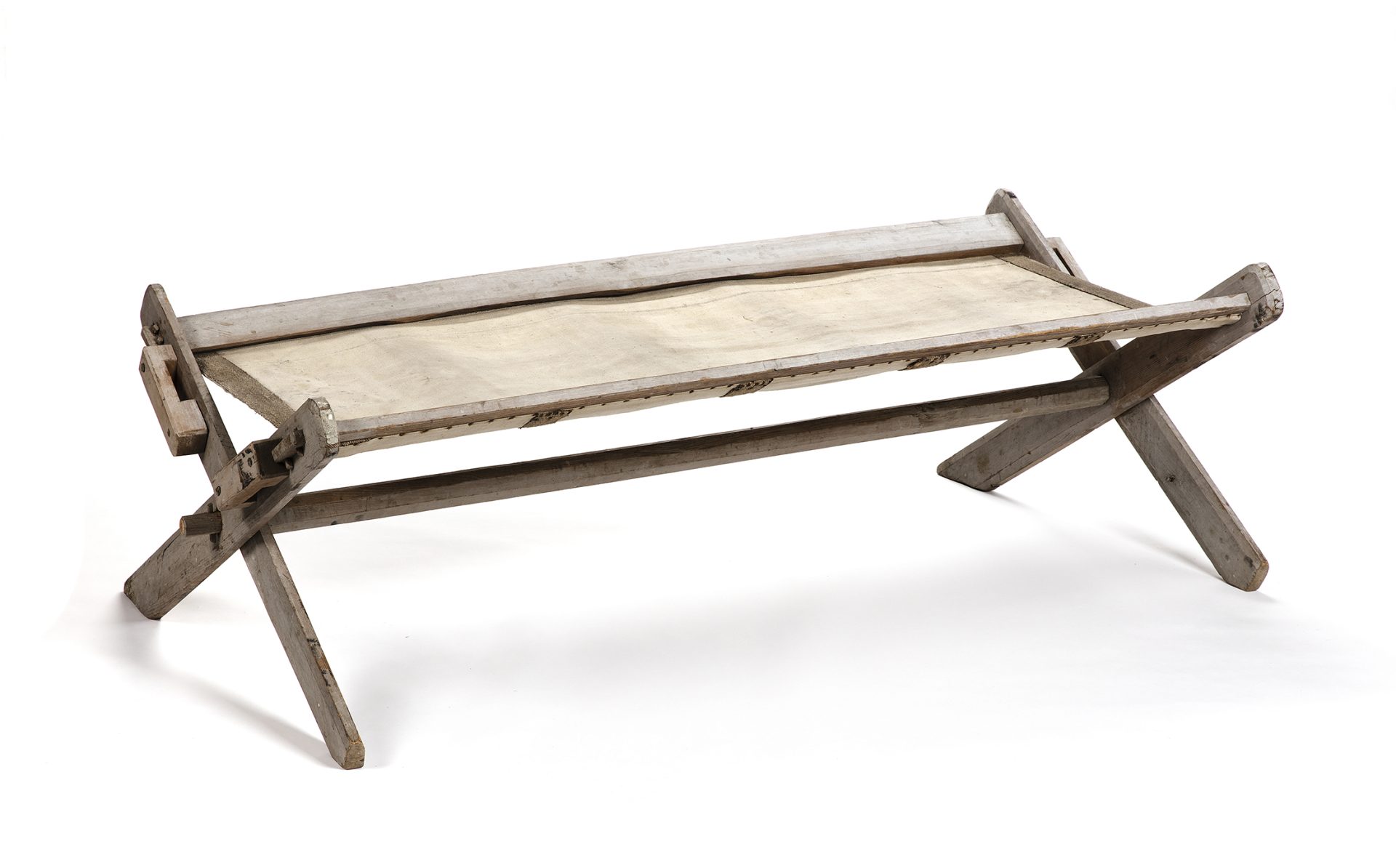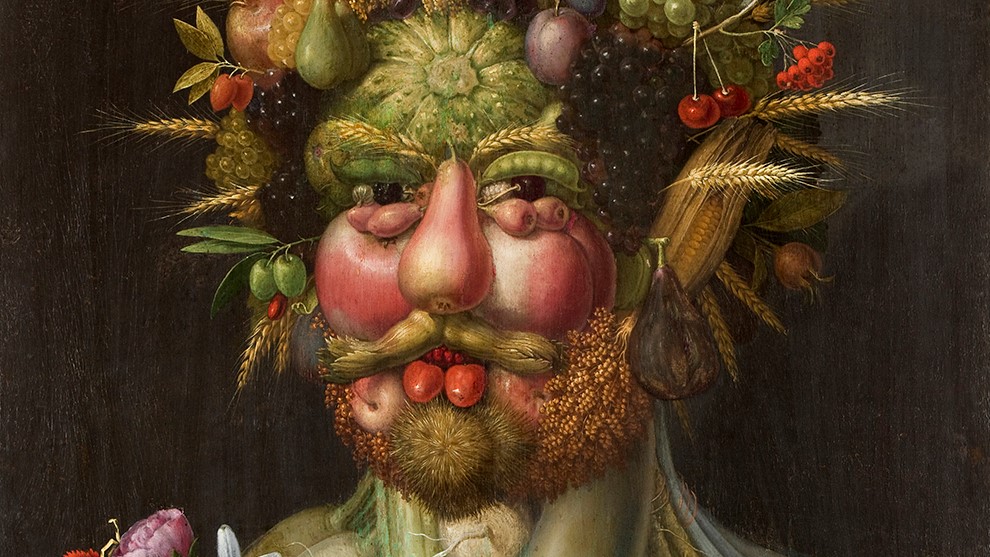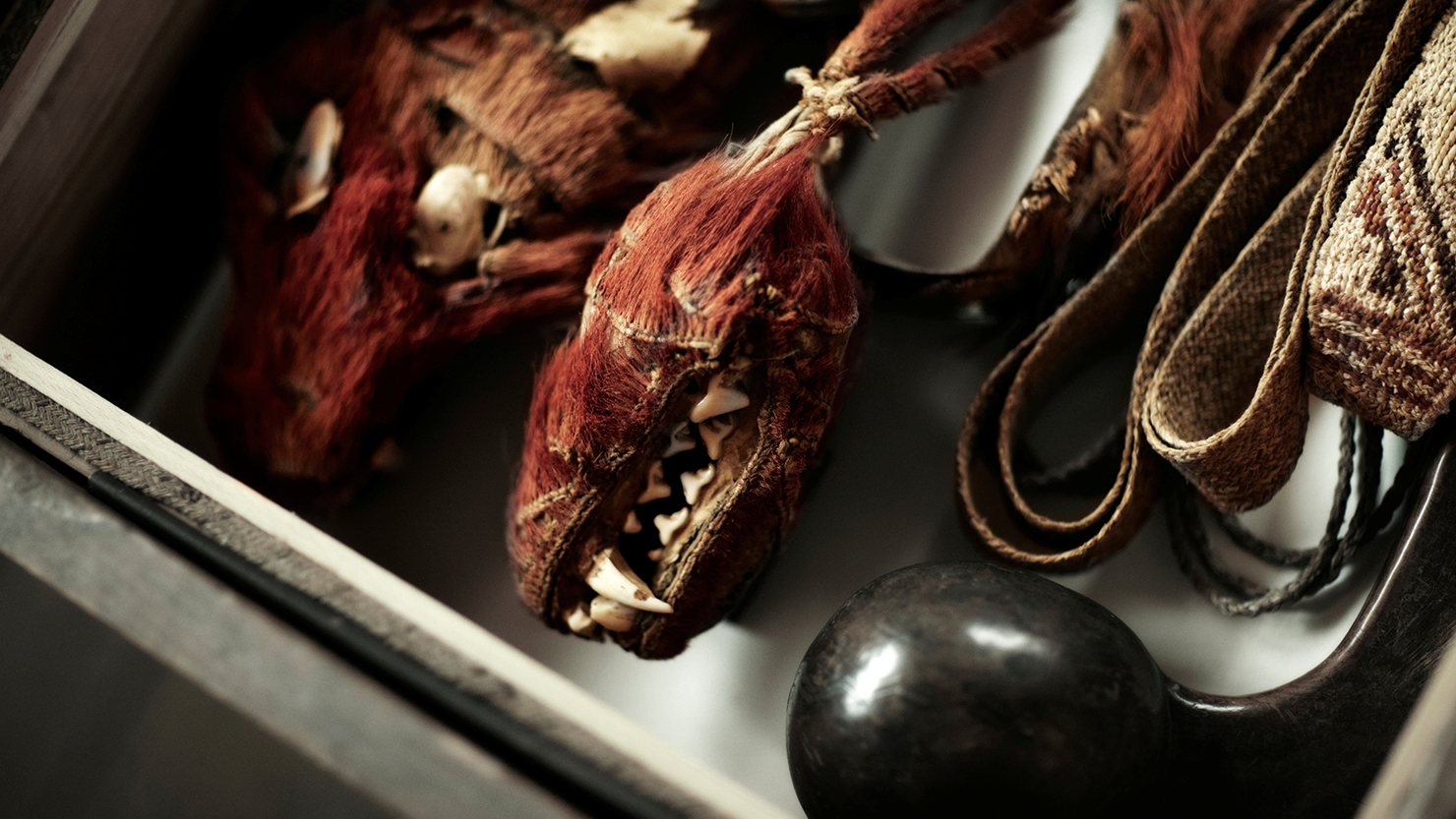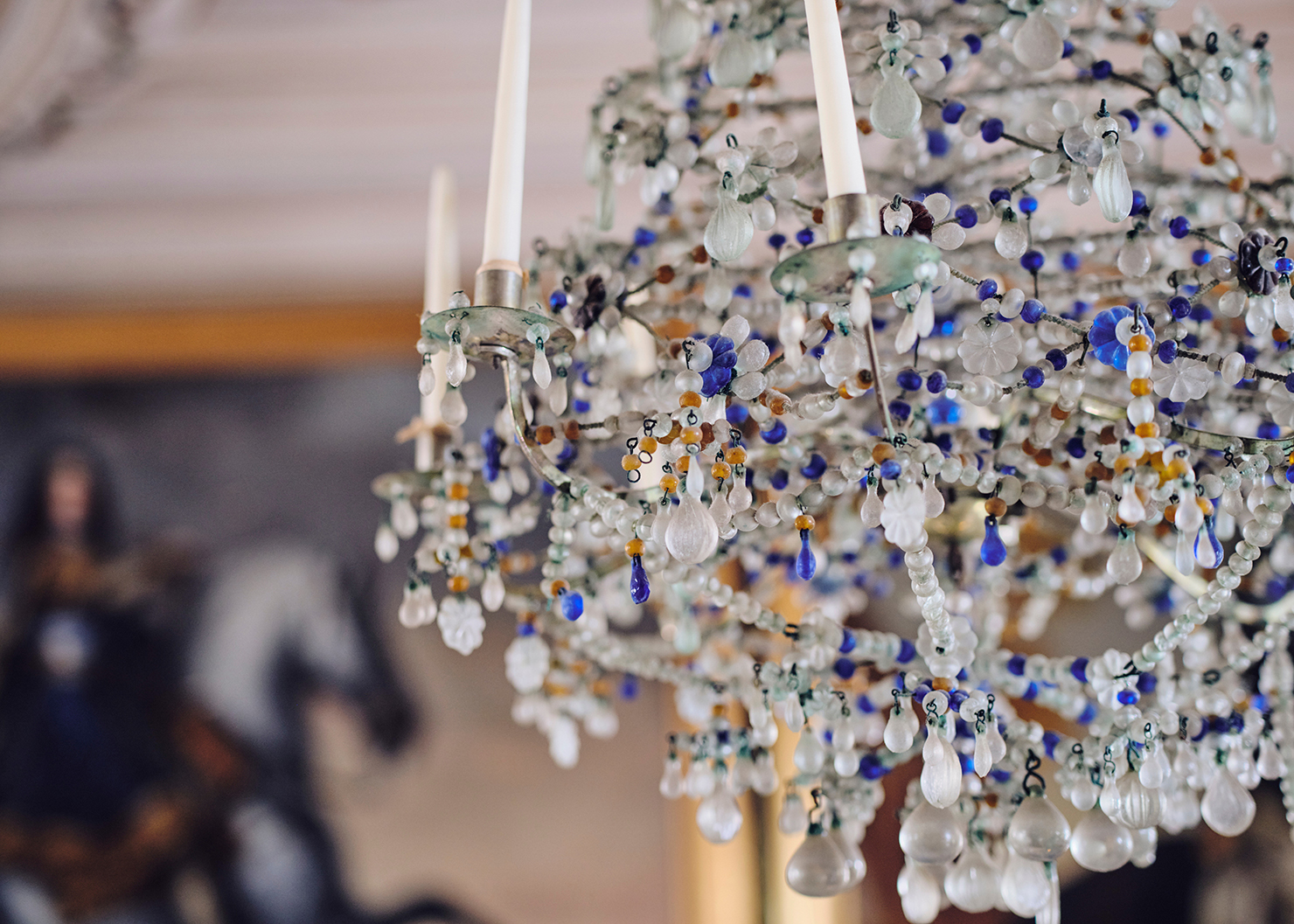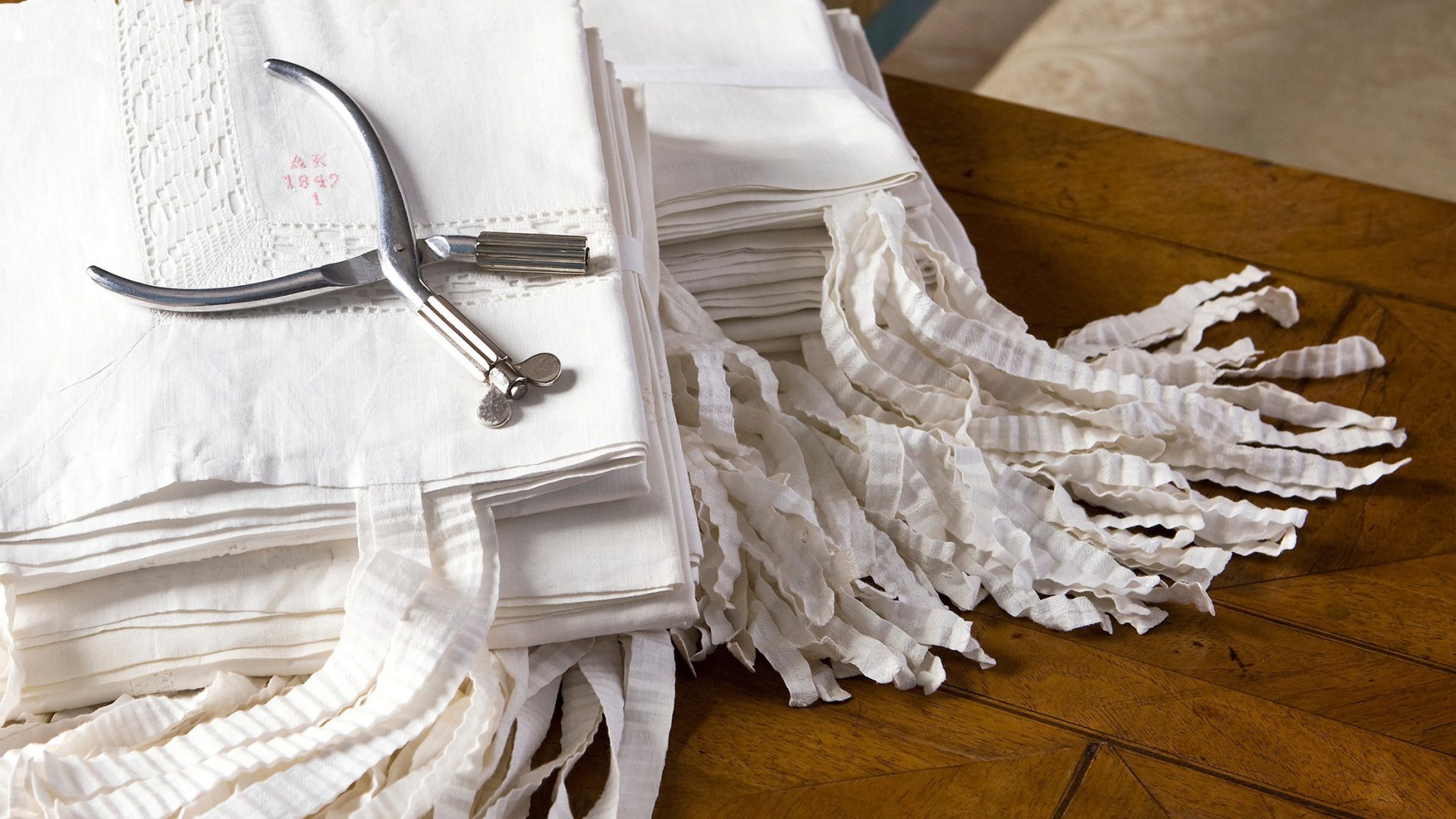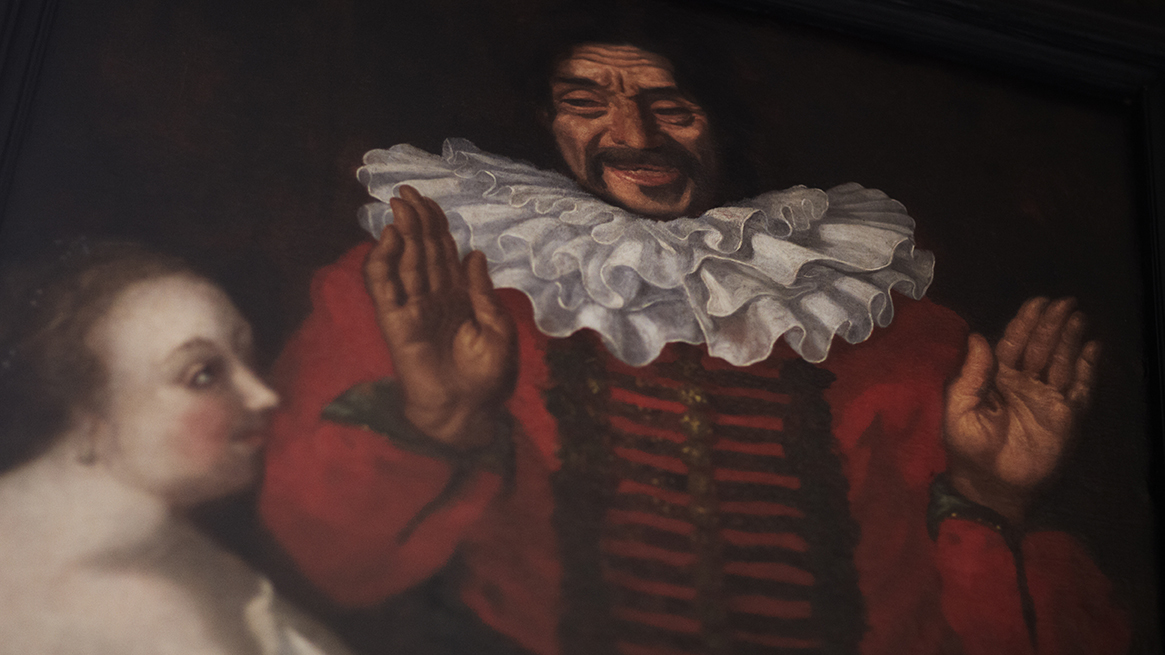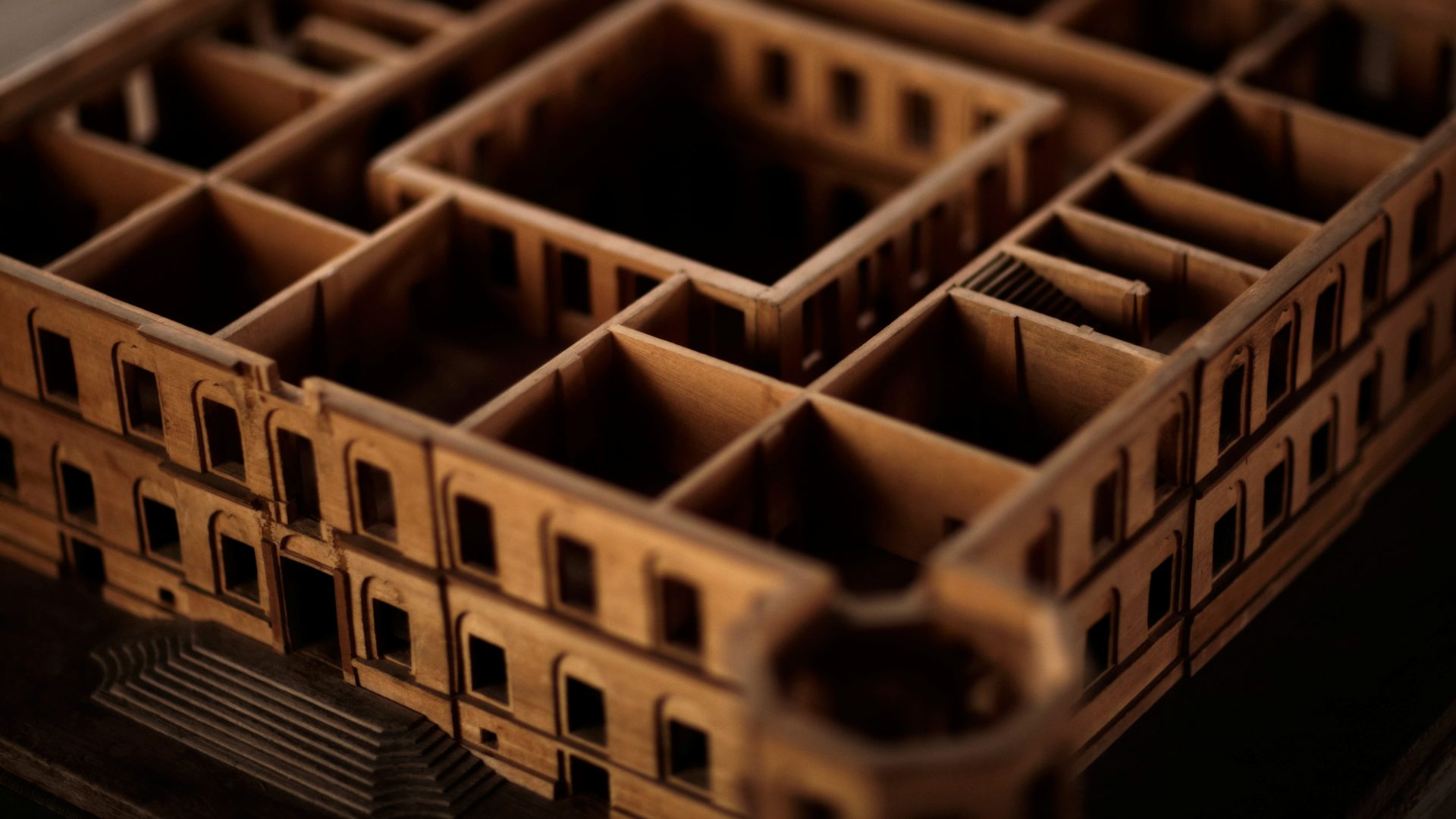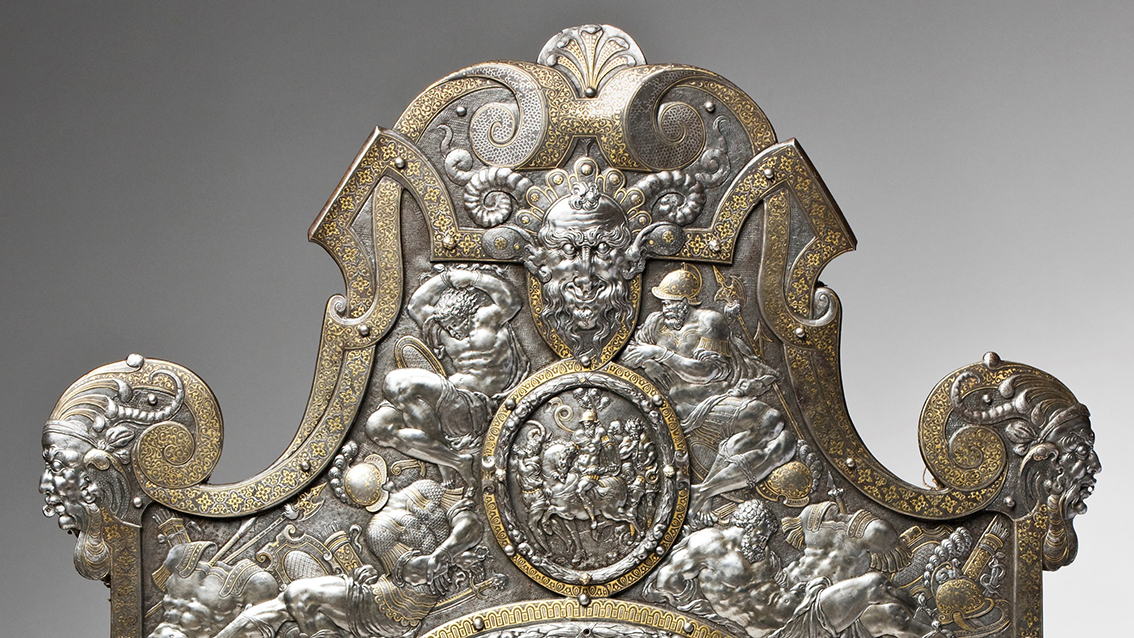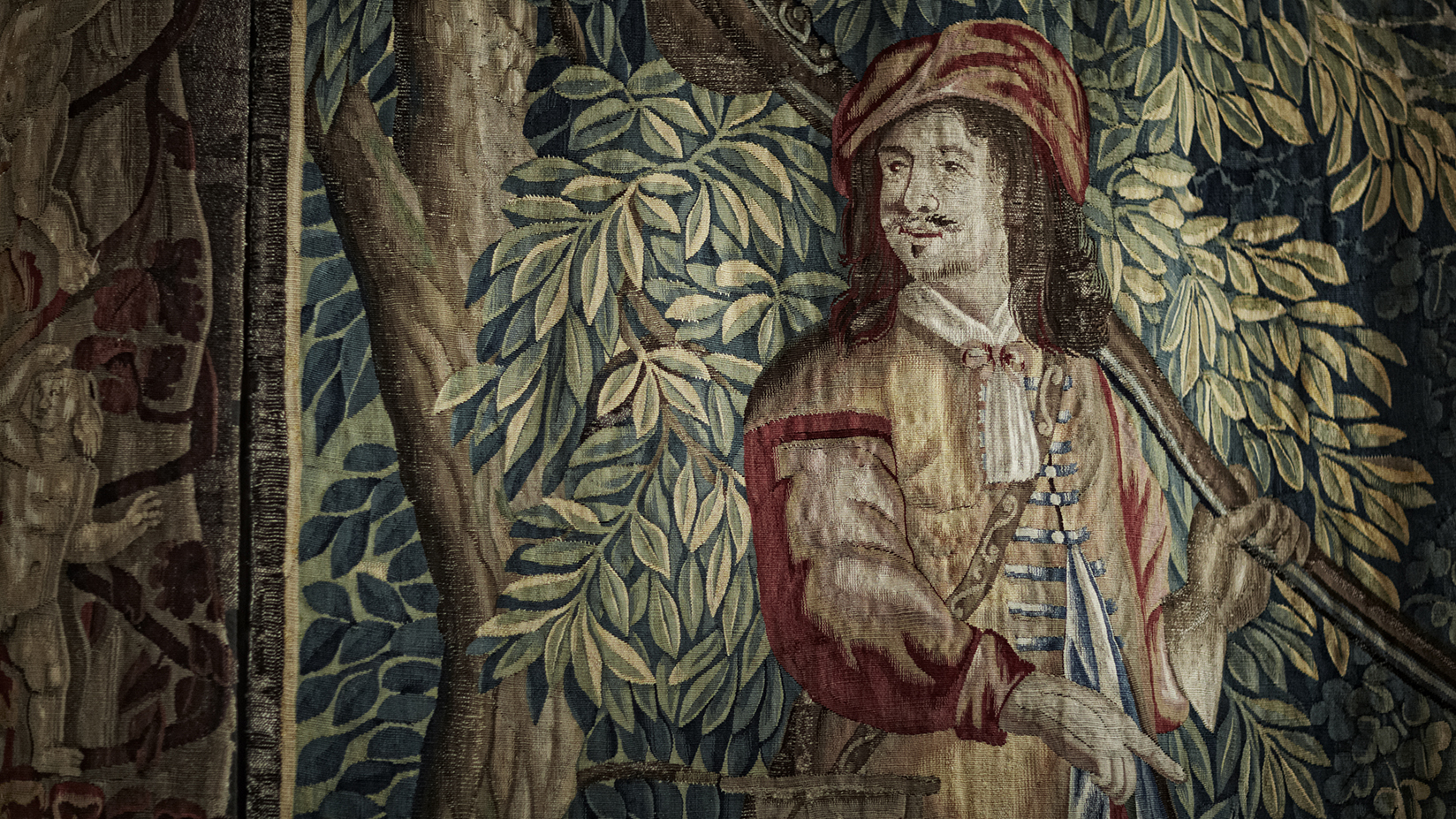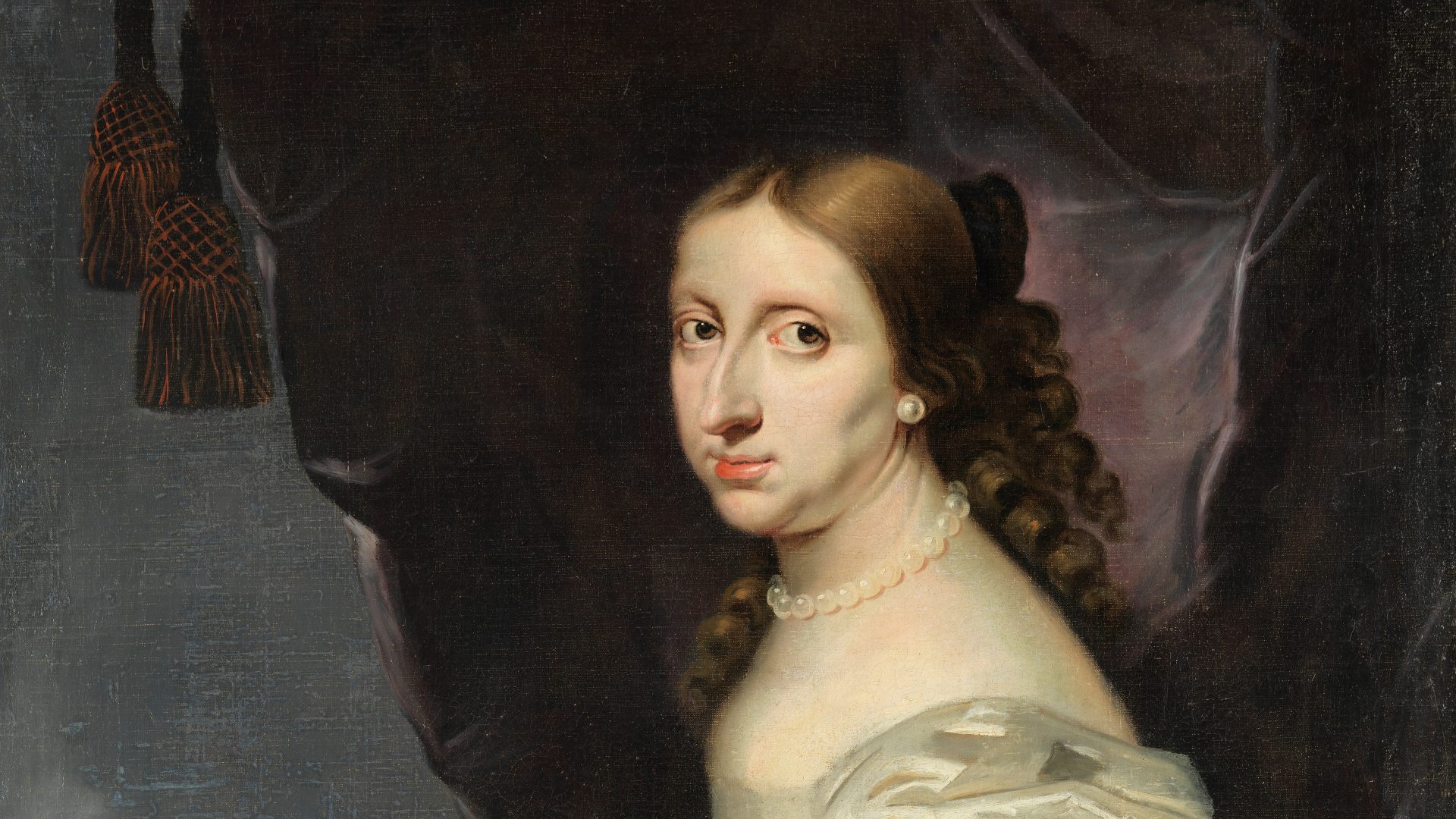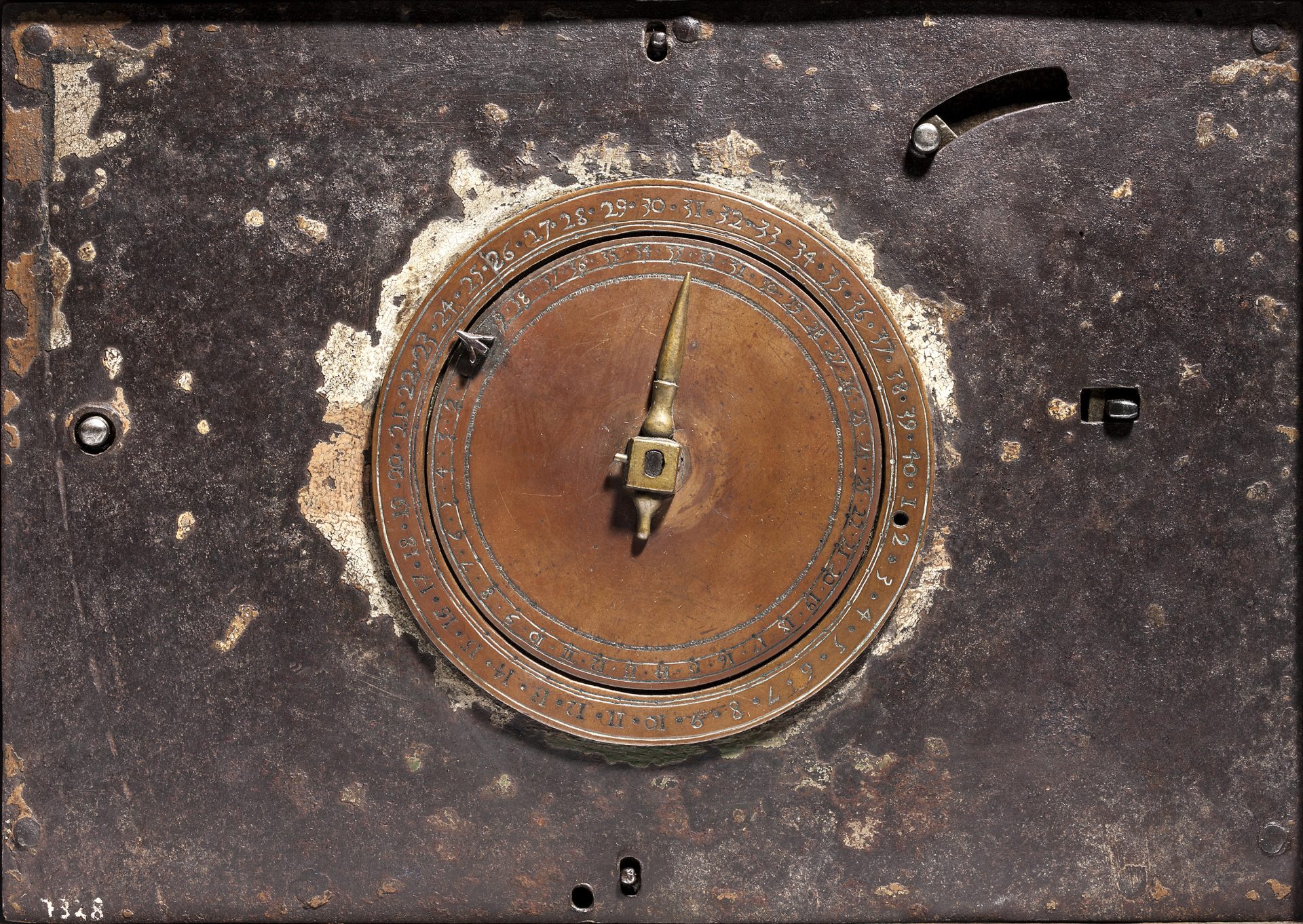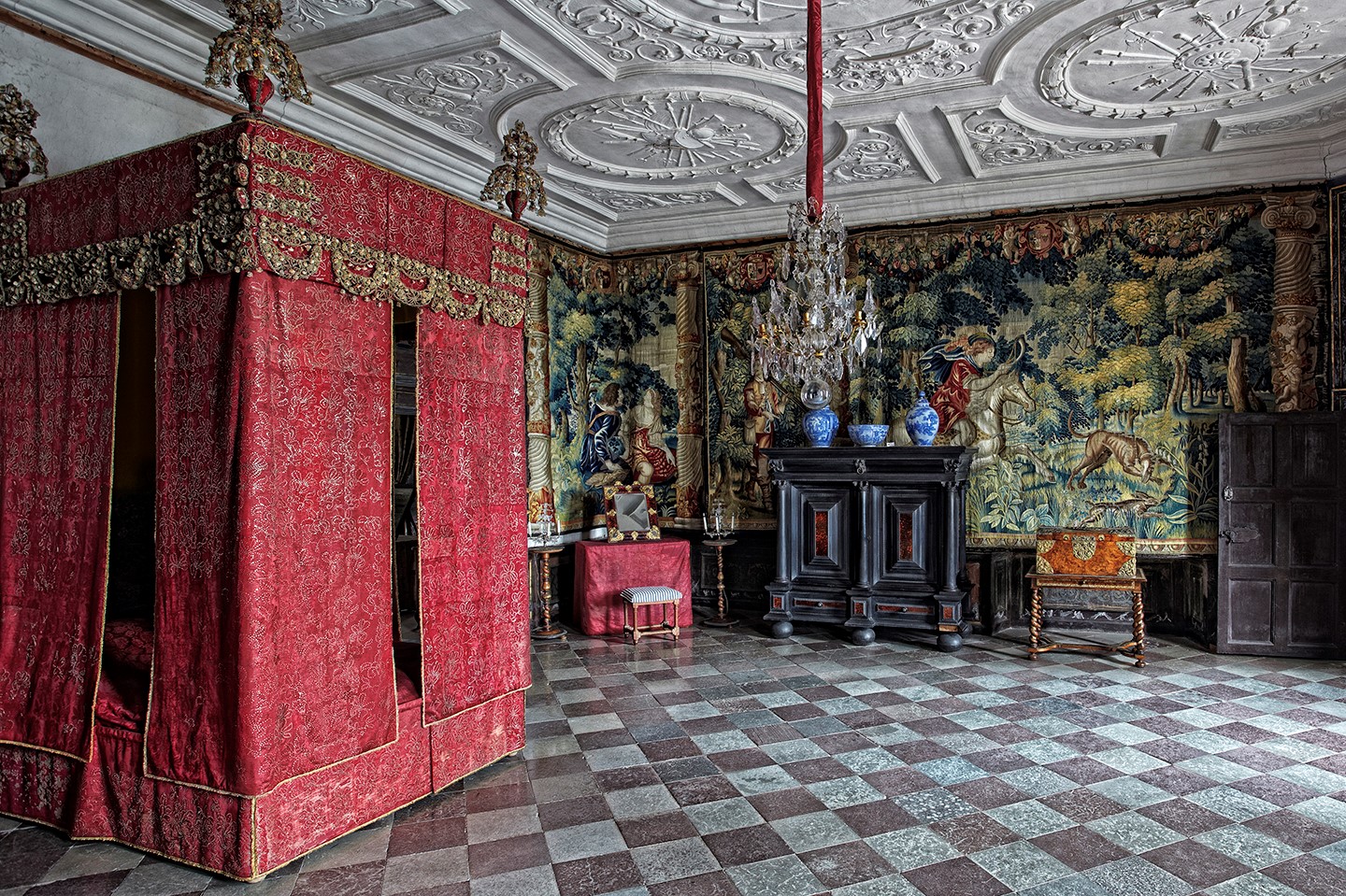
Beds
Perhaps the most prominent bed is Carl Gustaf Wrangel’s own, which stands in his bedchamber on the first floor. Wrangel’s bed has red silk curtains and coverings, decorated with silver sequins. Above each corner of the canopy are so-called pompoms. Each has plumes of silk flowers, sequins, rosettes and small silk tassels. The pompoms were mainly to decorate the bed, but also had a practical function in locking together the bed’s construction.
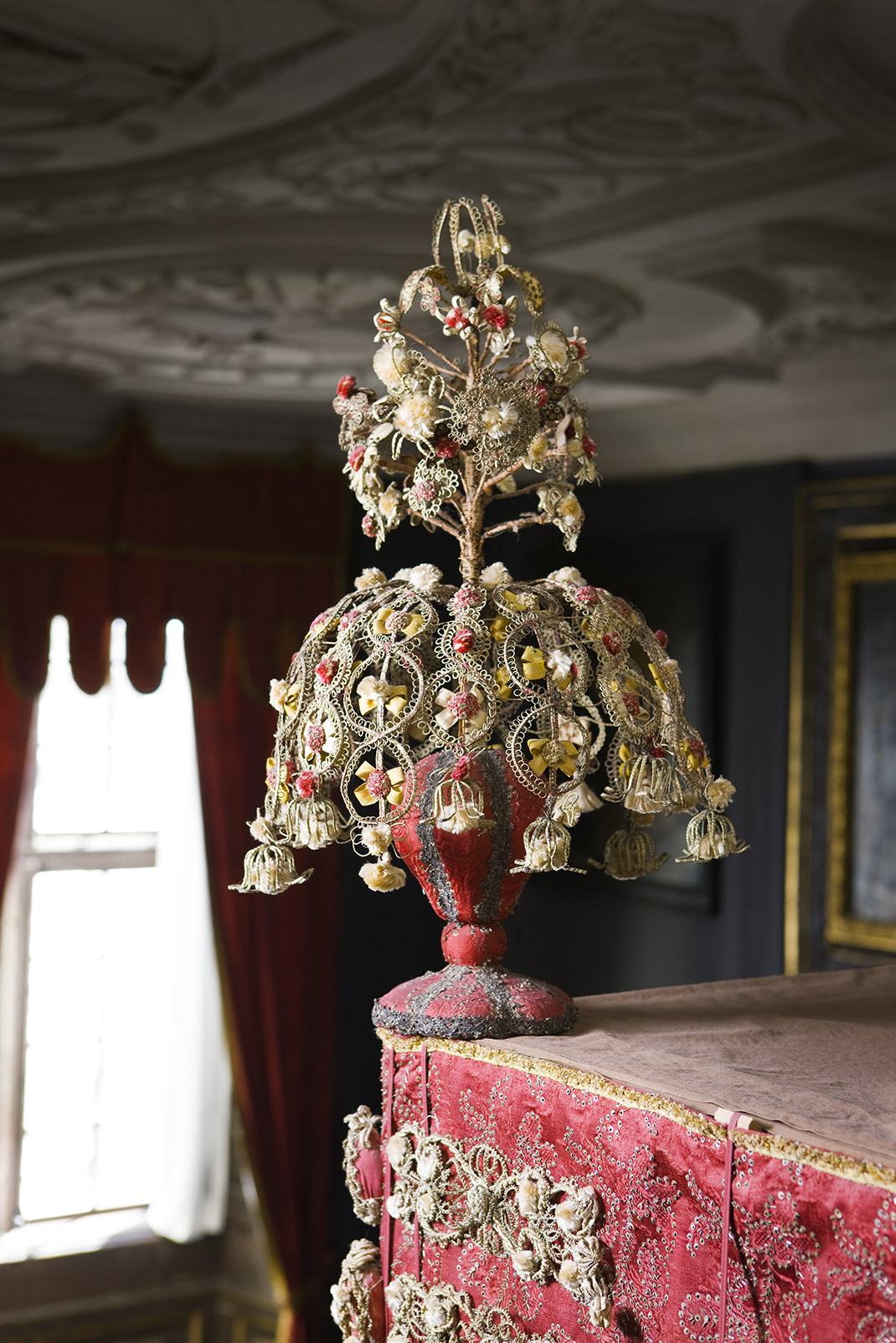
An observer could easily get the impression that these formal beds are short. But the fact is that both the count’s and the countess’s bed were 210 centimetres long. They may appear to be short because of the beds’ extreme height of around three metres. The shortest beds in Skokloster Castle have mattresses 180 centimetres long. They are in the guest rooms and were made in the 18th and 19th centuries. Naturally there were also shorter beds in the 17th century. But even Count Wrangel’s folding camp bed is just over two metres long.
